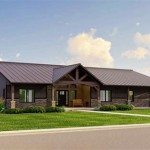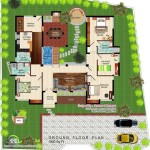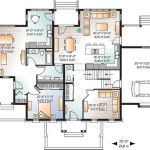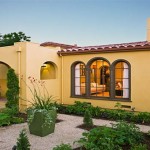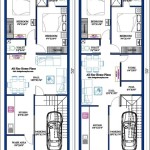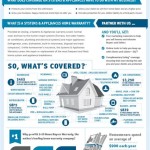Modern Home Plans With Cost to Build in Indonesia
Indonesia, a nation with diverse landscapes and cultures, presents a unique set of considerations when planning and constructing a modern home. Beyond aesthetics, factors such as climate, local building materials, and labor costs significantly influence the overall budget and feasibility of any modern home design. Understanding these elements is crucial for anyone considering embarking on a building project in this dynamic country.
This article provides a comprehensive overview of modern home plans suitable for Indonesia, addressing different design styles, material options, and the associated construction costs. The information presented aims to equip potential homeowners with the knowledge to make informed decisions and navigate the building process effectively.
Understanding Modern Home Styles in Indonesia
Modern architecture in Indonesia is not a monolithic entity. It encompasses a spectrum of styles, each reflecting distinct design principles and aesthetic preferences. Some popular variations include:
Minimalist Design:
Characterized by clean lines, simple geometric shapes, and a focus on functionality. This style emphasizes open spaces and minimal ornamentation, creating a sense of spaciousness and tranquility. Minimalist designs often incorporate large windows to maximize natural light and connect the interior with the exterior environment.Tropical Modernism:
This style blends the principles of modern architecture with elements that are specifically tailored to the Indonesian climate. Key features include overhanging roofs for shade, cross-ventilation strategies to promote airflow, and the use of natural materials such as wood and bamboo. Tropical modernism prioritizes comfort, energy efficiency, and a seamless integration with the surrounding landscape.Mid-Century Modern:
Inspired by the mid-20th century architectural movement, this style features clean lines, flat roofs, and large expanses of glass. Mid-century modern designs often incorporate natural materials like wood and stone, creating a warm and inviting atmosphere. This style emphasizes functionality and simplicity, with an emphasis on indoor-outdoor living.Contemporary Design:
This encompasses the latest trends in architectural design, often incorporating innovative materials, sustainable technologies, and unique forms. Contemporary homes in Indonesia may feature asymmetrical designs, floating elements, and a strong emphasis on visual appeal. This style reflects a forward-thinking approach to architecture, embracing innovation and experimentation.The choice of style is a personal one, but it is essential to consider the specific site conditions, local building regulations, and budget constraints when making a decision. Some styles are inherently more expensive to construct than others, depending on the complexity of the design and the materials required.
Key Considerations for Building Costs in Indonesia
Estimating the cost to build a modern home in Indonesia requires a thorough understanding of the various factors that influence construction expenses. These factors can be broadly categorized as follows:
Land Costs:
The price of land varies significantly depending on the location, size, and accessibility of the property. Land in urban areas and popular tourist destinations is typically more expensive than land in rural areas. It is essential to factor in land preparation costs, such as clearing, leveling, and any necessary soil stabilization work.Material Costs:
The cost of building materials can fluctuate depending on market conditions, availability, and the quality of materials selected. Concrete, steel, brick, and wood are the most commonly used structural materials in Indonesia. The choice of finishes, such as flooring, tiling, and fixtures, also significantly impacts the overall material costs. Importing specialized materials from overseas will substantially increase the budget.Labor Costs:
Labor costs vary depending on the skill level of the workers, the complexity of the project, and the region of Indonesia. It is crucial to hire experienced contractors and skilled laborers to ensure the quality and safety of the construction. Labor costs typically include wages, benefits, and any applicable taxes.Design and Permitting Fees:
Architectural design fees, structural engineering fees, and building permit fees are essential expenses that must be factored into the budget. These fees can vary depending on the complexity of the design and the local building regulations. It is advisable to engage qualified professionals to ensure compliance with all applicable codes and regulations.Other Costs:
Additional costs to consider include site preparation, landscaping, utility connections (water, electricity, sewage), and contingency funds for unexpected expenses. It is prudent to allocate a contingency fund of at least 10-15% of the total project cost to cover unforeseen circumstances.To provide a general range, a basic modern home in Indonesia could cost anywhere from IDR 5,000,000 to IDR 8,000,000 per square meter. More luxurious or complex designs can easily exceed IDR 10,000,000 per square meter. These are broad estimates, and a detailed cost analysis is necessary for each specific project.
Exploring Sustainable and Cost-Effective Building Practices
Given the environmental challenges and the need for affordability, sustainable and cost-effective building practices are increasingly important in Indonesia. These practices can reduce the environmental impact of construction, lower long-term operating costs, and enhance the comfort and livability of the home.
Passive Design Strategies:
These strategies leverage the natural environment to minimize the need for mechanical heating and cooling. Examples include orienting the building to maximize natural ventilation and minimize solar heat gain, using overhanging roofs and shading devices to protect from direct sunlight, and incorporating thermal mass to regulate temperature fluctuations.Use of Local and Sustainable Materials:
Utilizing locally sourced materials, such as bamboo, wood, and natural stone, can reduce transportation costs, support local economies, and minimize the environmental impact of construction. Choosing sustainable materials, such as recycled or reclaimed wood, can further reduce the environmental footprint of the project.Energy-Efficient Technologies:
Incorporating energy-efficient technologies, such as solar panels, energy-efficient lighting, and high-performance windows, can significantly reduce energy consumption and lower utility bills. While the initial investment may be higher, the long-term savings can offset the upfront costs.Water Conservation Measures:
Implementing water conservation measures, such as rainwater harvesting systems, low-flow fixtures, and drought-tolerant landscaping, can reduce water consumption and lower water bills. These measures can also help to mitigate the impact of droughts and water scarcity.Efficient Waste Management:
Implementing proper waste management practices during construction can minimize waste generation and reduce disposal costs. This includes separating recyclable materials, reusing construction debris, and composting organic waste.By adopting these sustainable and cost-effective building practices, homeowners can create modern homes that are not only aesthetically pleasing but also environmentally responsible and economically viable.
In addition to the above, consider the following when planning your modern home in Indonesia:
*
Climate Adaptability:
Indonesia experiences a tropical climate with high humidity and rainfall in many regions. Ensure the design incorporates proper drainage, ventilation, and waterproofing to prevent moisture damage and maintain a comfortable indoor environment.*
Earthquake Resistance:
Indonesia is located in a seismically active zone. It is crucial to design and construct the home to withstand earthquakes, using appropriate structural engineering techniques and building materials.*
Local Regulations and Permits:
Familiarize yourself with local building regulations and obtain all necessary permits before commencing construction. Compliance with these regulations is essential to avoid legal issues and ensure the safety of the building.*
Contractor Selection:
Choose a reputable and experienced contractor with a proven track record of successful projects. Obtain multiple quotes and thoroughly vet potential contractors before making a decision.*
Regular Site Supervision:
Regularly supervise the construction process to ensure that the work is being performed according to the design plans and specifications. Address any issues or concerns promptly to avoid delays and cost overruns.Careful planning, attention to detail, and adherence to best practices are essential for successfully building a modern home in Indonesia. By considering the factors outlined in this article, potential homeowners can make informed decisions and create a living space that is both beautiful and functional.
A Couple Built Modern Home In Bali For 17 000 See The Photos Business Insider
Couple Build 143k Investment Property In Bali For Early Retirement Business Insider

Modern Tropical House Design Perfection 3 Bedrooms 236sqm 2540sqft
A Couple Built Modern Home In Bali For 17 000 See The Photos Business Insider

Top 6 Bali Villa Design Ideas For Your Dream

Architectural Services Luxury House Design Emporio Architect

Top 20 Models Of Cost Saving And Gorgeous Prefabricated Houses In 2024

Architectural Services Luxury House Design Emporio Architect

3 Bedroom House Plan With Roof Terrace Id 33301 Design By Maramani

40 X 60 Modern House Architectural Plans 4 Bedroom

